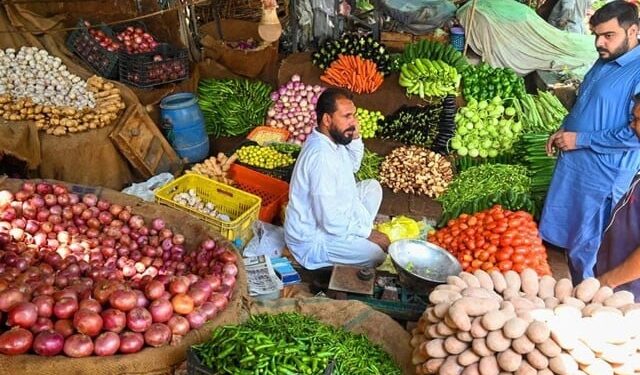Islamabad: The Federal Bureau of Statistics (FBS) has reported a slight decline in the weekly inflation rate in Pakistan, with the figure dropping by 0.27% over the recent week. However, despite the reported decline in inflation, many essential consumer goods have become more expensive, raising concerns among the public about the true impact of inflation on their day-to-day expenses.
This contradiction between reported inflation statistics and the on-ground price trends of everyday essentials is fueling public frustration and skepticism about official economic data.
Inflation Trends: Official Claims vs. Public Sentiment
According to the weekly inflation report issued by the Federal Bureau of Statistics, Pakistan continues to observe a gradual decline in inflation. In the latest weekly update, the FBS claimed a 0.27% decrease in the Sensitive Price Index (SPI) — a tool used to monitor the cost of essential items for different income groups.
Despite the optimistic headline figure, the report revealed that:
- 8 essential items became more expensive,
- 23 items registered a decline in prices,
- 20 items remained stable in terms of pricing.
This presents a mixed picture, suggesting that while the statistical average shows improvement, the rising prices of key household items are having a disproportionate effect on lower- and middle-income families.
Items That Became More Expensive: A Closer Look
Among the commodities that witnessed an increase in prices over the week, several are staple food and energy products, making life more difficult for ordinary citizens. Here’s a breakdown of the items that became more expensive and their percentage increase:
- LPG (liquefied petroleum gas): +14.86%
- Potatoes: +3.75%
- Diesel: +3.10%
- Chicken (meat): +2.17%
- Jaggery (gur): +2.25%
- Sugar: +2.13%
- Petrol: +1.88%
- Mustard Oil: +1.12%
- Dry Milk (powdered): +0.97%
- Basmati Broken Rice: +0.84%
- Tea (loose): +0.39%
These items are commonly used in daily life, and any increase in their prices has a direct impact on household budgets, especially for middle- and low-income groups. The steep surge in LPG and fuel prices is particularly concerning, as it increases transportation and cooking costs, indirectly raising the price of other goods.
Items That Became Cheaper: Temporary Relief for Consumers
In contrast, the following items showed a decline in prices:
- Eggs: -9.53%
- Tomatoes: -5.62%
- Garlic: -1.03%
- Lentils and Chickpeas: -0.35%
- Bananas: -0.01%
- Firewood: -0.01%
- Ghee (edible oil): -0.17%
While some of these reductions, like eggs and tomatoes, may provide short-term relief to consumers, most of the items with falling prices are either seasonal or do not contribute as significantly to monthly grocery bills as staples like rice, sugar, oil, and fuel.
Stable Prices of Key Items: The 20 Unchanged Commodities
According to the report, 20 items showed no significant change in price during the week. These included certain pulses, soaps, and salt. However, price stability does not necessarily mean affordability — many of these items already carry high price tags after earlier hikes and remain out of reach for economically vulnerable families.
Income Group Analysis: Who Is Most Affected by Inflation?
The Federal Bureau of Statistics also provided a breakdown of inflation impact across different income groups in the country. Here’s how the inflation rate varied:
- Income group up to Rs 17,732/month:
- Annual inflation rate: -3.08%
- Weekly change: -0.05%
- Income group Rs 17,733 – Rs 22,888/month:
- Annual inflation rate: -4.11%
- Weekly change: -0.05%
- Income group Rs 22,889 – Rs 29,517/month:
- Annual inflation rate: -2.40%
- Weekly change: -0.10%
- Income group Rs 29,518 – Rs 44,175/month:
- Annual inflation rate: -1.48%
- Weekly change: -0.13%
- Income group above Rs 44,176/month:
- Annual inflation rate: -0.63%
- Weekly change: -0.42%
The data shows that the lower-income brackets have experienced the largest percentage decline in inflation, but since these families spend a larger portion of their income on food and energy, even minor price increases in key items disproportionately affect their financial stability.
Fuel Price Hikes: A Silent Driver of Inflation
The rise in diesel and petrol prices — 3.10% and 1.88% respectively — is especially concerning. These increases affect:
- Transportation costs,
- The cost of food distribution,
- Utility prices,
- And other services.
Experts warn that continued fuel price hikes may have a cascading effect on overall inflation in the coming weeks, even if the headline SPI figures continue to show minor weekly declines.
Public Reactions and Criticism of Official Statistics
Despite official claims of declining inflation, many citizens have taken to social media and talk shows to express their dissatisfaction, claiming that government data does not reflect the true cost of living.
One Lahore-based resident said:
“Every week we hear that inflation is down, but every time I go to the market, prices are higher than before.”
Experts and economists also suggest that the Sensitive Price Index (SPI), which monitors 51 essential items, may not be a complete reflection of core inflation, which includes services and long-term goods.
Root Causes of Price Fluctuations
Several factors are contributing to this volatile pricing environment:
- Rupee depreciation: The Pakistani Rupee has seen consistent pressure against the US Dollar, increasing the cost of imported goods including petroleum and cooking oil.
- Global commodity prices: Fluctuations in international oil and food prices due to geopolitical tensions and supply chain disruptions.
- Subsidy removals: Government austerity measures tied to IMF loan conditions have led to the removal of certain subsidies.
- Taxation: Higher indirect taxes on fuel and goods increase consumer prices.
- Seasonal supply issues: Some perishable items like tomatoes and eggs naturally fluctuate based on supply cycles.
What Lies Ahead: Need for Structural Reforms
Economists believe that while short-term declines in inflation are welcome, they do not signify a resolution of the country’s economic problems. More sustainable solutions include:
- Controlling fuel price volatility
- Improving supply chain logistics
- Supporting agriculture to reduce food inflation
- Expanding social protection for low-income families
Dr. Ashfaque Hasan Khan, a prominent economist, noted:
“Inflation can only be controlled sustainably through structural reforms, not cosmetic fixes or statistical manipulation.”
Conclusion: Inflation May Be Falling on Paper, But Not in Reality
While the Federal Bureau of Statistics maintains that inflation is declining, the rising costs of crucial items like fuel, sugar, LPG, and chicken suggest that the relief is not being felt where it matters most — at the grassroots level.
For real economic improvement, the government must align statistical claims with consumer realities, adopt long-term policy measures, and implement a strategy that ensures the benefits of economic stability are shared across all income brackets.

























